Presented here are recent news announcements regarding the following organizations: GS1 US, Avery Dennison, Subway, Semtech, ICTnexus, Impinj, the DoseID Consortium, Inpixon, Memfault, Orca Systems and Totum.
GS1 US Offers Subway Restaurant Case Study Backed by Avery Dennison
GS1 US has released a case study that predicts radio frequency identification (RFID) platforms will deliver automated farm-to-fork traceability. The not-for-profit information standards organization facilitates industry collaboration to improve supply chain visibility and efficiency using its standards. The case study, which can be viewed here, explores how an inventory-management solution has helped Subway eliminate hassles for more than 24,000 of its restaurants throughout North America.
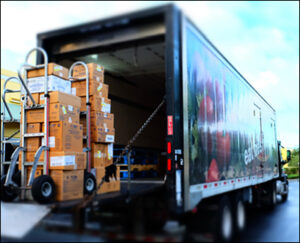 “Technology needs to answer real business problems, and it depends on accurate, standardized master data as a foundation,” said Daniel Riscalla, Avery Dennison‘s senior director of technology, in a prepared statement. “GS1 standards supply that.” Riscalla purchased his first Subway franchise in 2010 and saw the need for back-office technology that would help his store and others conduct inventory counts efficiently. “I remember the first time I did my weekly inventory in the restaurant. I was looking at the cases on the shelves, asking myself ‘Why am I holding a paper and a pen to count the inventory? I see barcodes on cases, and I have an iPhone with me.'”
“Technology needs to answer real business problems, and it depends on accurate, standardized master data as a foundation,” said Daniel Riscalla, Avery Dennison‘s senior director of technology, in a prepared statement. “GS1 standards supply that.” Riscalla purchased his first Subway franchise in 2010 and saw the need for back-office technology that would help his store and others conduct inventory counts efficiently. “I remember the first time I did my weekly inventory in the restaurant. I was looking at the cases on the shelves, asking myself ‘Why am I holding a paper and a pen to count the inventory? I see barcodes on cases, and I have an iPhone with me.'”
Riscalla founded software and hardware solutions company ZippyYum, a California-based startup that develops and sells solutions for operational automation and inventory management for food retailers. ZippyYum was acquired by Avery Dennison in 2021 and became part of the company’s Retail Branding and Information Solutions (RBIS) segment. The acquisition drives growth of the broader RFID Intelligent Labels platform through operational automation and transparency across the supply chain as the food industry continues to adopt intelligent label technology.
“With the backing of Avery Dennison, a certified GS1 US solution partner, developers are exploring the introduction of radio frequency identification at the case level, as well as introducing artificial intelligence into the inventory management systems,” the study states. “This is projected to save additional labor costs and increase accuracy and traceability by further automating the inventory process. Data is captured by ‘sweeping’ the RFID scanner within a specific distance. When combined with other Avery Dennison proprietary platforms, event tracking will deliver an automated approach to true ‘farm‑to‑fork’ traceability.”
Impinj Joins DoseID Consortium, Expands RFID Healthcare Focus
RFID and Internet of Things (IoT) company Impinj has announced that it has joined the DoseID Consortium to expand its focus on RFID applications in healthcare, and to participate in developing standards for RFID use in that sector. DoseID is a member-driven industry consortium with representatives from pharmaceutical companies, healthcare providers and hospitals.
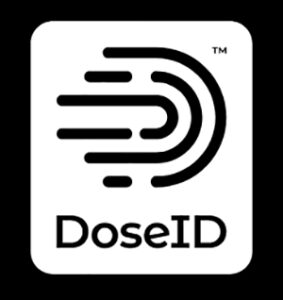 Impinj partners with healthcare providers that use its RFID products to offer solutions designed to improve patient care, reduce costs and increase efficiencies. Solutions built by these partners are designed to work within an existing healthcare setting, the company reports, supporting compliance with procedures and regulations and making the work of caring for patients easier.
Impinj partners with healthcare providers that use its RFID products to offer solutions designed to improve patient care, reduce costs and increase efficiencies. Solutions built by these partners are designed to work within an existing healthcare setting, the company reports, supporting compliance with procedures and regulations and making the work of caring for patients easier.
“RAIN RFID based solutions in hospitals and healthcare help organizations focus on caring for patients,” said Megan Brewster, Impinj’s VP of advanced technology, in a prepared statement. “We are excited to join the DoseID Consortium to help advance their healthcare vision. Our RAIN RFID products help healthcare providers operate with confidence, knowing that systems are in place to automate inventory management, track uniforms and bed linens, streamline patient care and help keep caregivers safe. DoseID enables the healthcare industry to further standardize RAIN RFID use and empowers us to continue inventing.”
“DoseID is pleased that Impinj has joined our consortium to help spread the use of RFID in healthcare to track drug products, instruments and supplies, and improve outcomes,” added Tim Kress-Spatz, the DoseID Consortium’s president, in the statement. “We look forward to Impinj sharing its knowledge as we further the DoseID specification.”
Semtech, ICTnexus Bring LoRaWAN Connectivity to Cook Islands
Semtech has announced a collaboration with ICTnexus, an information communications technology and IoT solution and service provider, to bring LoRaWAN connectivity to the Cook Islands. As part of ICTnexus’s Smart Islands project, an IoT platform will feature Semtech’s LoRa devices, as well as a LoRaWAN network for the island’s infrastructure. Implementing LoRaWAN allows for several smart island use cases, the companies report, including energy metering, water management, air quality and weather stations, street light operation, asset tracking and emergency notifications.
 “Scalability was key in choosing the right technology to develop the Cook Islands into truly smart islands,” said Tai Kauraka Tangaroa, ICTnexus’s CEO, in a prepared statement. “As we started with Rarotonga to launch, building IoT infrastructure across 15 islands is no simple task, the strong capabilities of Semtech’s LoRa devices and LoRaWAN standard provided an ease of deployment and scalability this comprehensive project requires to succeed. ICTnexus and Semtech are bringing the Smart Islands concept to life with the Cook Islands.”
“Scalability was key in choosing the right technology to develop the Cook Islands into truly smart islands,” said Tai Kauraka Tangaroa, ICTnexus’s CEO, in a prepared statement. “As we started with Rarotonga to launch, building IoT infrastructure across 15 islands is no simple task, the strong capabilities of Semtech’s LoRa devices and LoRaWAN standard provided an ease of deployment and scalability this comprehensive project requires to succeed. ICTnexus and Semtech are bringing the Smart Islands concept to life with the Cook Islands.”
According to ICTnexus, this deployment involves the first energy-management systems leveraging LoRaWAN in the Pacific Islands. The long-distance communication capability of LoRaWAN, the company indicates, connects IoT-enabled devices for applications for the island’s power grid, utility meters, gas meters, turbidity sensors for the water treatment plant, water-flow and treatment sensors, water tank-level sensors, waste-water monitors, and smart water meters. In addition, one of the main applications in connection with the Cook Island Climate Change Program is energy monitoring and management. Such applications will feature a management platform for operators to view data in real time to maintain the island’s operations.
“The concept of a smart island is no longer a concept as the potential of LoRa and the LoRaWAN standard continues to be embraced worldwide,” said Marc Pégulu, the VP of IoT product marketing and strategy for Semtech’s Wireless and Sensing Products Group, in the prepared statement. “The Cook Islands’ investment for a robust IoT-based infrastructure with LoRaWAN is a great move to improve the lives of its citizens.”
Inpixon Publishes RFID Vendor Survey
Inpixon has announced the results of its annual “State of Indoor Intelligence Report.” Findings from the 2022 study reveal enterprises are shifting focus from the customer to the employee. Ninety-two percent of respondents ranked workplace experience as an important priority of their organization, so their employees will be more productive (69 percent), stay with the company longer (57 percent), improve how their workspace is being used (41 percent) and boost their brand (40 percent). As such, organizations are turning to indoor intelligence to improve workplace experience, with 42 percent of respondents citing this as an important use case for the technology.
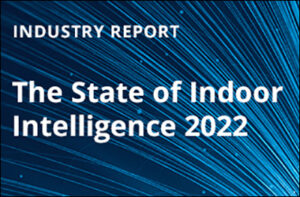 Created by leveraging artificial intelligence, algorithms and automation, indoor intelligence is the culmination of hardware and software elements (e.g., indoor maps, precise indoor positioning, IoT devices, analytics, building data and security) that serve the needs of the modern enterprise, the company explains. Using data, technology and networks, indoor intelligence provides a deeper understanding of the day-to-day journeys of employees and customers, Inpixon indicates.
Created by leveraging artificial intelligence, algorithms and automation, indoor intelligence is the culmination of hardware and software elements (e.g., indoor maps, precise indoor positioning, IoT devices, analytics, building data and security) that serve the needs of the modern enterprise, the company explains. Using data, technology and networks, indoor intelligence provides a deeper understanding of the day-to-day journeys of employees and customers, Inpixon indicates.
“The customer-first mantra is ceding to an employee-first mentality in some enterprises,” said Nadir Ali, Inpixon’s CEO, in a prepared statement. “We believe organizations are increasingly realizing that investing in employee satisfaction can ultimately benefit the customer and lead to better business results. Businesses are re-thinking what the future of work entails and searching for new ways to accommodate employee expectations to improve workplace experience and increase retention. Indoor intelligence can play a key role in transforming and enhancing the workplace experience to the benefit of employees, management and their customers.”
According to the survey findings, enterprises are shifting focus from customers to employees, with respondents reporting employee-focused solutions as a top use case (39 percent), ahead of customer-facing solutions (34 percent), whereas last year’s report showed the opposite ranking, with customer-facing solutions (42 percent) more common than employee-focused solutions (36 percent). Ninety-two percent of respondents ranked workplace experience as important, very important or critical to their organization.
Employers indicated that they want to improve workplace experience for their employees so that they will be more productive (69 percent), stay with the company longer (57 percent), improve how their workspace is being used (41 percent) and boost their brand (40 percent). Most in-demand features include events and desk booking. The top-ranked features of workplace experience were employee productivity (63 percent), virtual and in-person events (46 percent) and desk and room booking (44 percent).
Ninety-eight percent of respondents indicated interoperability between different software and hardware, as well as integrations to other applications, were important when choosing an indoor intelligence solution. Among 17 different integration types, collaboration (50 percent), meeting and room booking (47 percent), security (42 percent), customer management (42 percent) and social media tools (35 percent) were ranked the most valuable.
IoT sensors and devices (38 percent) were said to be the most important application to respondents’ future strategy, followed closely by augmented reality (38 percent) and predictive AI analytics (37 percent). The survey data indicates indoor intelligence adoption will continue to increase. Around 52 percent of respondents are increasing the pace of their indoor intelligence initiatives, with 92 percent reporting this was key for their company to stay competitive—an 11 percent increase year-over-year—and 77 percent saying they plan to invest in indoor intelligence solutions this year.
Memfault Updates IoT Device Observability Platform
Memfault, which provides a cloud-based observability and update platform for connected devices, has announced the expansion of its Android OS offering with the release of Android SDK 4.0, featuring new monitoring and over-the-air update features. The Android SDK functions similarly to the firm’s embedded MCU SDK, designed to help developers monitor and manage smart devices at scale. Memfault hopes to offer Android OS developers visibility into device health and root causes of bugs, as well as the capability to push remote patches and updates without disrupting user experiences. Organizations with electronics built on the Android OS include Logitech and Taiv.
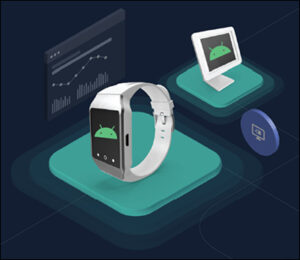 “Before Memfault, we had to recall and re-flash our TV boxes manually when we had a kernel crash,” said Jordan Davis, Taiv’s CTO, in a prepared statement. “This wasted so much of our engineering time, as we had no easy way to know when a new bug was introduced. Now, Memfault gives us the ability to track and identify new kernel crashes quickly and fix them before they become widely deployed. Memfault also gives us the ability to send OTA updates right from our desks. This has saved our engineers so much time, but most importantly, it has given our customers a better experience with no interruptions.”
“Before Memfault, we had to recall and re-flash our TV boxes manually when we had a kernel crash,” said Jordan Davis, Taiv’s CTO, in a prepared statement. “This wasted so much of our engineering time, as we had no easy way to know when a new bug was introduced. Now, Memfault gives us the ability to track and identify new kernel crashes quickly and fix them before they become widely deployed. Memfault also gives us the ability to send OTA updates right from our desks. This has saved our engineers so much time, but most importantly, it has given our customers a better experience with no interruptions.”
“As complex use cases explode and hardware constraints are what they are, our Android customers have been asking for incremental updates given the huge impact that has on increasing bandwidth efficiency and reducing the need for temporary on-device storage,” added Christopher Coleman, Memfault’s CTO, in the statement. “Now we can offer Android developers even greater diagnostic and updating capabilities with the low-footprint required for various use cases.”
The platform supports system-wide default metrics such as app versions, storage usage metrics, CPU, skin-temperature metrics and selected system properties. Using Memfault’s OTA Update Client and Management Dashboard, developers can manage staged rollouts and incremental updates, giving developers more control over the update paths of devices, and enabling them to manage bandwidth, costs and associated risks.
Orca Systems Intros Integrated SoC for Direct-to-Satellite IoT Connectivity
Orca Systems, a fabless semiconductor company that offers digital RF technology, has announced a wireless system-on-chip (SoC) solution for satellite IoT known as the ORC3990. The company, which focuses on low-power wireless solutions for IoT applications, says it designed and developed the ORC3990 SoC to meet the demands of satellite IoT connectivity.
The SoC solution provides enabling RF technology for Totum, an IoT connectivity company, enabling direct-to-satellite, indoor operation over Totum’s low-Earth orbit (LEO) network. Orca Systems’ technology assets in the RF, analog, digital transceiver and power-management domains were incorporated into the ORC3990’s design. This has enabled the company to support partners like Totum with integrated digital RF solutions, the company reports.
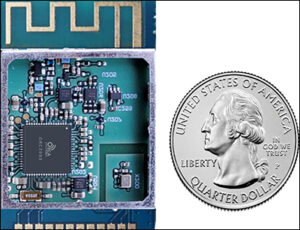 “By rapidly delivering successful first silicon to meet our project deadlines, Orca Systems enabled Totum to quickly demonstrate communication from the ground with our SoC-based endpoint to our satellite network in record time,” said Ted Myers, Totum’s CEO, in a prepared statement. “The ORC3990 SoC, with its high level of integration and low power requirements, enables the lowest cost bidirectional endpoints in the industry with a 10-year battery life. This is game-changing technology for satellite IoT connectivity.”
“By rapidly delivering successful first silicon to meet our project deadlines, Orca Systems enabled Totum to quickly demonstrate communication from the ground with our SoC-based endpoint to our satellite network in record time,” said Ted Myers, Totum’s CEO, in a prepared statement. “The ORC3990 SoC, with its high level of integration and low power requirements, enables the lowest cost bidirectional endpoints in the industry with a 10-year battery life. This is game-changing technology for satellite IoT connectivity.”
“Orca’s unique architecture lends itself to integrating everything required in an IoT-focused SoC application,” said John McDonough, Orca Systems’ CEO, in the prepared statement. “Manufacturing the ORC3990 SoC with GlobalFoundries’ 22FDX 22nm FD-SOI technology assured a cost-effective, low-power SoC solution that will be highly competitive in today’s market. Our innovative approach to IC design leverages extensive reuse of our SoC architecture, circuitry and methodologies, enabling us to achieve first-time-right silicon in one year of design for our partner Totum.”
The ORC3990 SoC integrates system functions into a single device in a small 68-QFN package. It includes Orca’s flexible, third-generation Live Wireless RF and digital radio subsystem, customized to support the requirements of Totum’s LEO satellite network. The system also comes with a low-noise amplifier, a digital power amplifier, a Totum satellite modem, a power-management unit subsystem including all analog blocks, a dual Arm Cortex-M0+ CPUs for separate network and application processing, volatile and non-volatile memory for the on-chip CPUs, security functions, and key analog and digital peripherals.
Exhibitors at RFID Journal LIVE! 2022 offer a wide variety of RFID and IoT solutions. To learn more, visit the event’s website.


